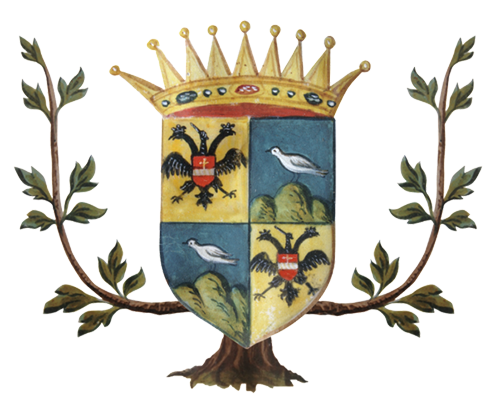Valnogaredo
The territory on which our vines grow are the splendid clay-limestone terraces of Mount Versa, along the southern slope characterized by the presence of white scale and by intrusions of ammonite red and pure limestone rich in layers of black flint.
The considerable quantity of well-structured clay allows the wines to express themselves with phenolic power and richness.
The hamlet of Valnogaredo belongs to the municipality of Cinto Euganeo, in the province of Padua and there are about 200 inhabitants.
Inhabited since prehistoric times, Cinto Euganeo was initially a Roman colony: the Roman aqueduct of Valnogaredo, still in operation today, dates back to this period. In the barbarian era it became a fortified fortress, whose castle strengthened by Ezzelino,
it was razed to the ground in 1313, during the conflict between Scaligeri and Carraresi.
In the seventeenth century, under the Venetian domination, the Villa Contarini in Valnogaredo was built, which once
it housed as many as 326 canvases by eminent artists, which were later alienated.
Until 1826, Cinto was included in the diocese of Verona: the archpriest of the Assumption is worthy of note, with its medieval bell tower and late Renaissance church from 1590 which has been remodeled several times until 1776, and the parish church of Valnogaredo, documented
from 1297 but rebuilt by the Contarini in 1519 and then restored in style
baroque in 1758, declared a national monument in 1921 for its valuable architecture and artistic treasures
inside it preserves (including several frescoes by Jacopo Guarana from the 18th century and statues by Bonazza on the facade).
Interesting sites
Villa Contarini
Piva had its development in the eighteenth century by the will of the noble Venetian Contarini family, who modified it starting from a pre-existing structure. In the same century the painters Andrea Urbani and Jacopo Guarana were called, who decorated the interiors.
Later the villa passed to other owners and today it is still private and in good condition.
Located a few meters from the parish church in the heart of the hamlet, on the dolcependio of the hills, the villa develops in length
with its L-shape, due to the adjacency of two barchesse on the right side.The building has three floors, open on the first two floors by
single-lancet windows with round arches, which are grouped centrally on the main floor to form a three-light window with a balustrade.
There are three barchesse (two adjacent to the right and one autonomous on the left), characterized, according to the most common form, by arches
round arch under which you had access to the means and to part of the agricultural activities. The scenes are preserved in the main hall of the villa
painted by Guarana, one of his most important works outside Venice, framed by minor interventions by Urbani.
An Italian garden extends in front of the villa, overlooking the hilly and still mostly agricultural landscape of the surrounding areas.
Buso della Casara
This ancient source is located in Valnogaredo, a sort of underground aqueduct from the Roman era consisting of a system of caves and tunnels dug into the rock. The flow of the sources of Faedo and Valle S. Giorgio was thus conveyed and directed
up to Atheste, today's Este. Such a water supply system is still in
function, as for millennia, thanks to recent restoration work.
Church of Valnogaredo
Built in 1758, in Venetian Baroque style, inside it preserves famous paintings and frescoes by Jacopo Guarana.
Flora
Wild herbs
Valnogaredo is a well known place among the local population for the collection of wild herbs.
Typical are the "sparesine" (wild asparagus), the "scrissoi" (the carlettti), the "cassalieori", the "brignigoe", the "pissacan" (dandelion), the "ajo de bisso" (wild garlic). And again the wild rocket, chives and wild fennel
Flowers
All wildflowers are born spontaneously (they are not chemically treated!) And are typical of pasture ("vegro").
It is easy to find wild gladioli, carnations, gorse, wild peas, rose
canina, whose fruits (rose hips) have astringent properties (in dialect they are called
"stropacui") and are very rich in vitamin C.
Fruit trees
There are many centuries-old almond trees ("mandolari") that color the valley in spring, olive trees ("olivari"), figs ("figari"), cherry trees ("saresari"), mulberries
white berried ("morari"), the trees that produce mirabelle ("amoi"), and jujubes ("zizoari").
Fauna
On the property there are numerous hares and birds (robins, hoopoes, blackbirds, cuckoos, swallows, pheasants, crows).
It is possible to admire the flight of hawks and buzzards, and appreciate the intense colors of green lizards, frogs, butterflies and praying mantises.
Every now and then you can meet some "scarbonasso", a harmless snake and
some wild boar less harmless for agricultural activity.





